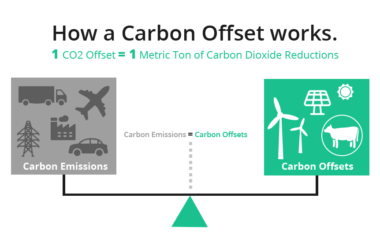Carbon Monoxide (CO) is a colorless, odorless, and tasteless gas that is produced when fuel is burned incompletely. This can occur in a variety of situations, from car engines to gas stoves to fireplaces. Because it’s invisible and odorless, CO can be particularly dangerous if it accumulates in an enclosed space.
Sources of Carbon Monoxide
CO is produced whenever any type of fuel is burned, including gasoline, propane, natural gas, oil, wood, and coal. This means that common household appliances such as furnaces, water heaters, stoves, and fireplaces can all be sources of CO if they’re not properly maintained and ventilated. Additionally, running a car in an enclosed garage or using a gas-powered generator indoors can also lead to dangerous levels of CO.
Dangers of Carbon Monoxide
Carbon Monoxide is dangerous because it can interfere with the body’s ability to transport oxygen. When inhaled, CO binds with the hemoglobin in red blood cells, preventing them from carrying oxygen to the body’s tissues and organs. This can lead to a range of health problems, from mild symptoms like headaches and dizziness to more severe consequences like unconsciousness and death.
Short-term Exposure
Short-term exposure to low levels of CO can cause symptoms like headache, dizziness, nausea, and confusion. In more severe cases, it can lead to loss of consciousness and death.
Long-term Exposure
Long-term exposure to low levels of CO can also be harmful, especially for individuals with pre-existing health conditions such as heart disease or respiratory problems. Over time, it can lead to decreased cognitive function, memory problems, and difficulty concentrating.
Symptoms of Carbon Monoxide Poisoning
The symptoms of CO poisoning can be subtle and easily mistaken for other illnesses like the flu. They include headache, dizziness, nausea, vomiting, fatigue, and confusion. In more severe cases, symptoms can progress to shortness of breath, chest pain, and loss of consciousness. If you suspect CO poisoning, it’s important to get to fresh air immediately and seek medical attention.
Protecting Against Carbon Monoxide
Carbon Monoxide Detectors
One of the most effective ways to protect against CO poisoning is to install CO detectors in your home. These devices are designed to sound an alarm when they detect elevated levels of CO, giving you time to evacuate and take action before the situation becomes dangerous.
Ventilation Systems
Ensuring that your home is properly ventilated is also important for preventing CO buildup. This includes regular maintenance of heating and cooking appliances, as well as the use of exhaust fans in areas where fuel is burned.
Safe Practices
Finally, it’s important to follow safe practices when using fuel-burning appliances. This includes not using gas-powered generators or grills indoors, and never running a car in an enclosed garage.
Carbon Monoxide Regulations
Workplace Regulations
In the workplace, employers are required to monitor CO levels and take action to protect employees if levels exceed safe limits. This can include providing proper ventilation, using CO detectors, and providing training on CO safety.
Residential Regulations
In many areas, residential building codes require the installation of CO detectors in homes. These regulations are designed to protect residents from the dangers of CO poisoning.
Conclusion
Carbon Monoxide is a dangerous gas that can be produced by any fuel-burning appliance. It’s important to be aware of the sources of CO in your home and take steps to protect against it. This includes installing CO detectors, ensuring proper ventilation, and following safe practices when using fuel-burning appliances. By taking these precautions, you can help keep yourself and your loved ones safe from the dangers of CO poisoning.
Similar Articles
FAQs about Carbon Monoxide
What is Carbon Monoxide?
Carbon Monoxide (CO) is a colorless, odorless, and tasteless gas that is produced when fuel is burned incompletely. It can be produced by any fuel-burning appliance, such as car engines, gas stoves, and fireplaces. Because it’s invisible and odorless, it can be particularly dangerous if it accumulates in an enclosed space.
How does Carbon Monoxide affect the human body?
CO can interfere with the body’s ability to transport oxygen. When inhaled, CO binds with the hemoglobin in red blood cells, preventing them from carrying oxygen to the body’s tissues and organs. This can lead to a range of health problems, from mild symptoms like headaches and dizziness to more severe consequences like unconsciousness and death.
What are the symptoms of Carbon Monoxide poisoning?
The symptoms of CO poisoning can include headache, dizziness, nausea, vomiting, fatigue, and confusion. In more severe cases, symptoms can progress to shortness of breath, chest pain, and loss of consciousness.
How can I protect against Carbon Monoxide?
You can protect against CO poisoning by installing CO detectors in your home, ensuring that your home is properly ventilated, and following safe practices when using fuel-burning appliances. This includes not using gas-powered generators or grills indoors, and never running a car in an enclosed garage.
What should I do if I suspect Carbon Monoxide poisoning?
If you suspect Carbon Monoxide poisoning, it’s important to get to fresh air immediately and seek medical attention. Then turn off any fuel-burning appliances and open windows and doors to ventilate the area. If the symptoms are severe or if the person affected is unconscious, call emergency services right away.










